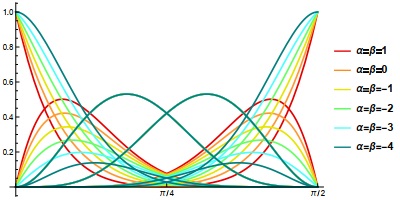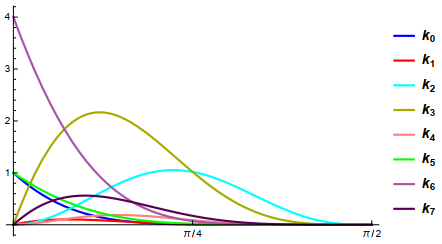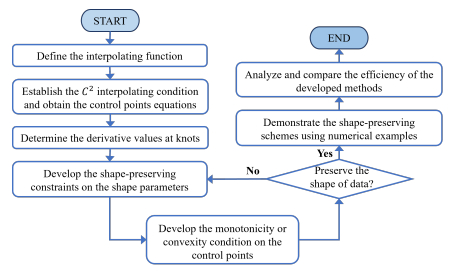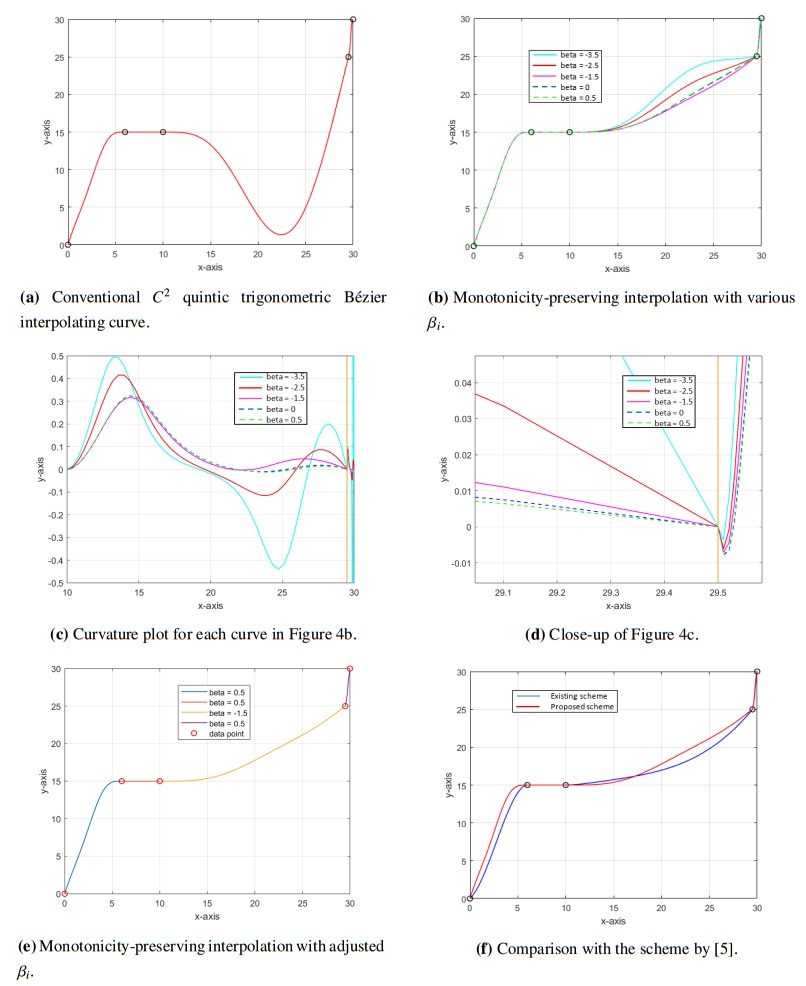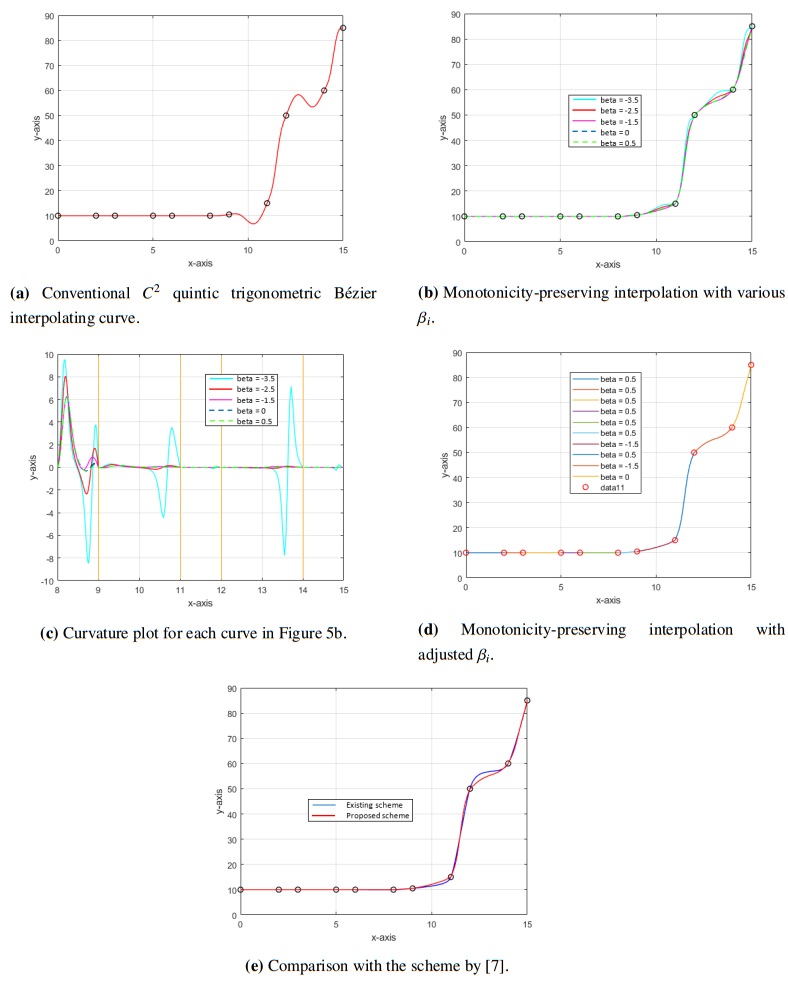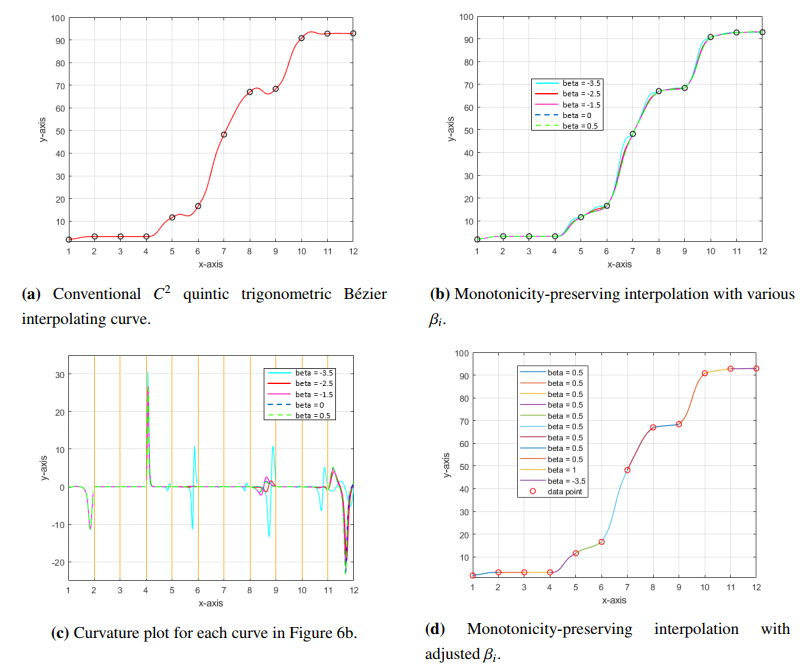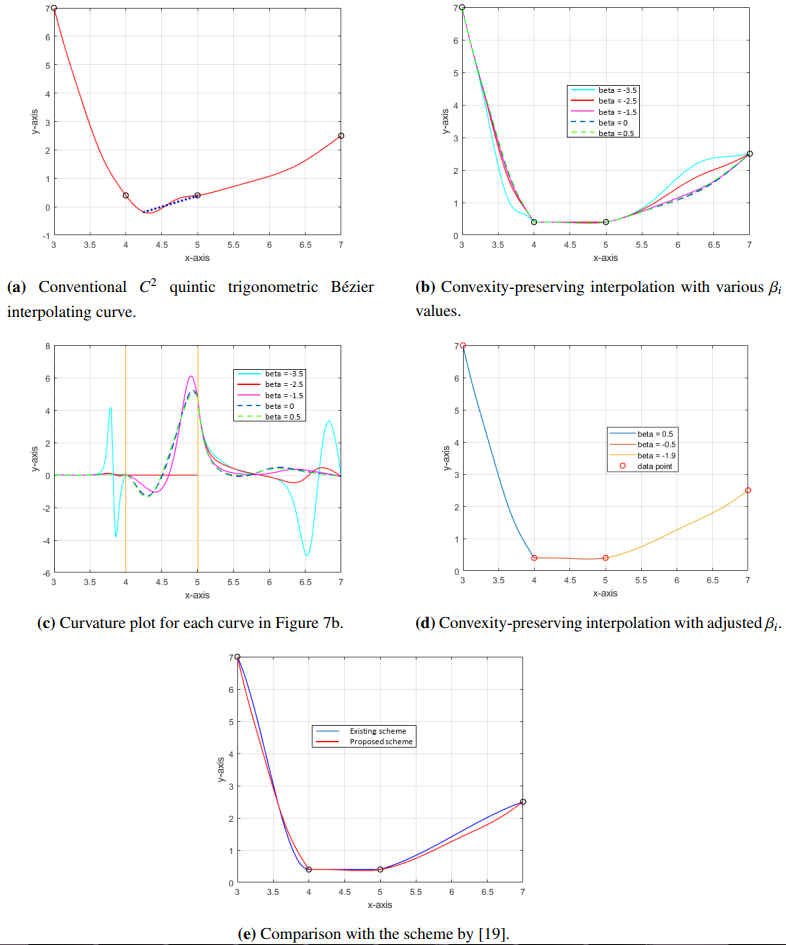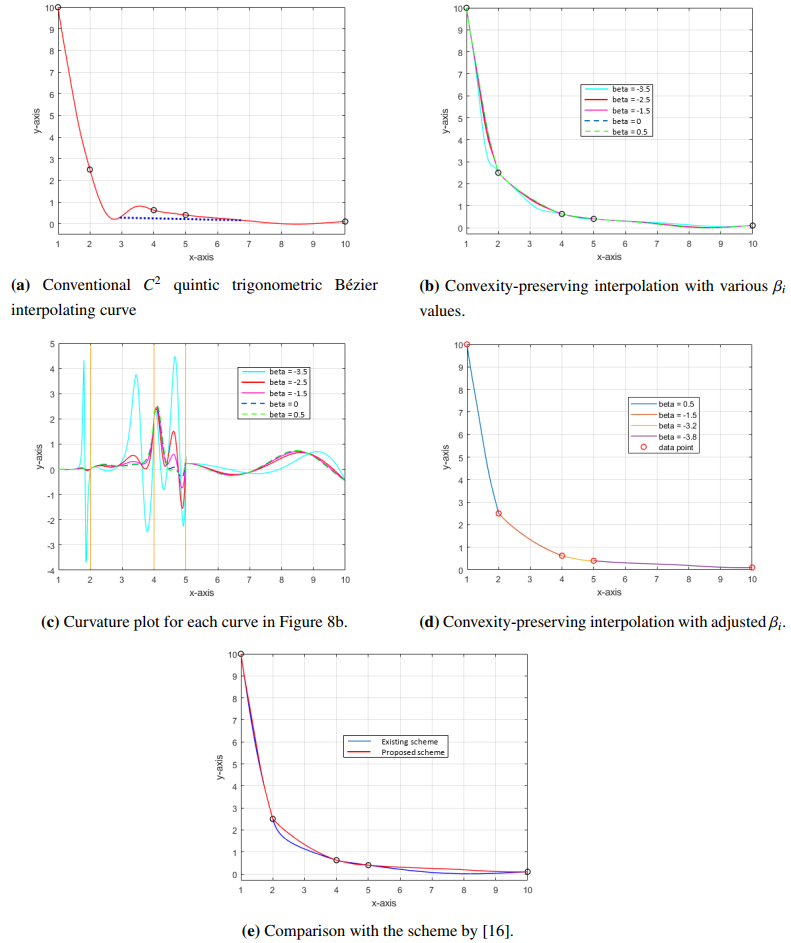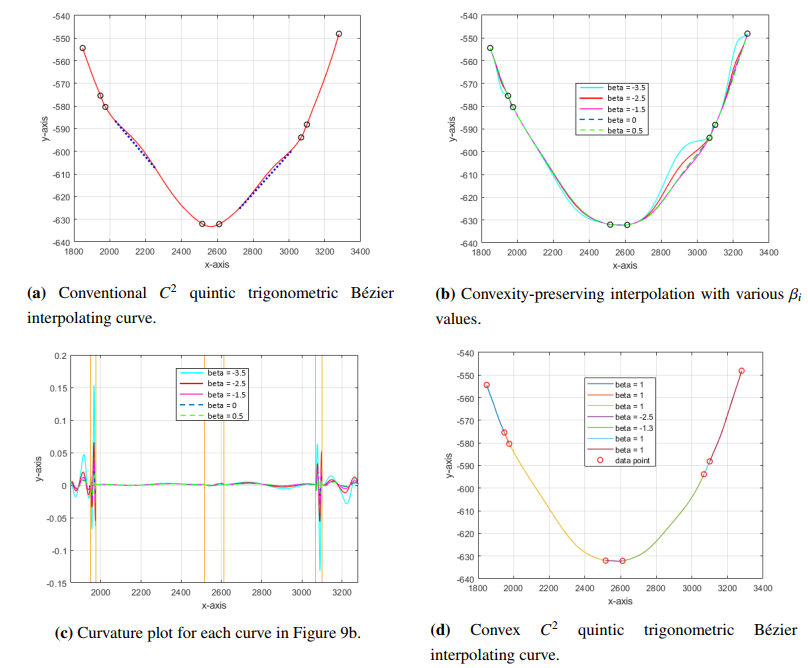1.
Introduction
With the advancement of the world, the ambiguity and uncertainty in the life of human beings were increasing and an expert or decision-analyst couldn't handle such sort of ambiguities and uncertainties by employing the theory of crisp set. Thus, Zadeh [1] diagnosed the fuzzy set theory (FST) and its elementary results in 1965 to cope with such sort of ambiguities and uncertainties by changing the two-point set {0,1} to the unit interval [0,1]. The FST holds a supportive grade which contains in [0,1]. The FST attracted numerous scholars from almost every field of science and they did research and utilized the FST in their respective fields. Rosenfeld [2] firstly employed the FST in the environment of groups to structured fuzzy groups. Kuroki [3,4,5,6] interpreted fuzzy semigroups (FSG), bi-ideal in semigroups, and fuzzy ideal. The fuzzy ideals and bi-ideals in FSGs were also presented by Dib and Galhum [7]. The fuzzy identities with application to FSGs were established by Budimirovic et al. [8]. The generalized fuzzy interior ideals and fuzzy regular sub-semigroup were given in [9,10] respectively. The fuzzy bi-ideals, fuzzy radicals, and fuzzy prime ideals of ordered semigroups are presented in [11,12]. Kehayopulu and Tsingelis [13] and Xie and Tang [14] presented the concept of regular and intra-regular ordered semigroups. Khan et al. [15] explored certain characterizations of intra-regular semigroups. Jaradat and Al-Husban [16] investigated multi-fuzzy group spaces.
The conception of bipolar fuzzy (BF) set is one of the generalizations of FST, as FST is unable to cover the negative opinion or negative supportive grade of human beings. Thus, Zhang [17] initiated the BF set theory (BFST) to cover both positive and negative opinions of human beings by enlarging the range of FST ([0,1]) to the BFST ([0,1],[−1,0]). The BFST holds a positive supportive grade (PSG) which contains in [0,1] and negative supportive grade (NSG) which contains in [−1,0]. Kim et al. [18] initiated BCFST in semigroups. Kang and Kang [19] explored BFST applied to sub-semigroups with the operations of semigroups. BFST in Γ-semigroups was interpreted by Majumder [20]. The certain properties of BF sub-semigroups of a semigroup are presented in [21,22]. Chinnadurai and Arulmozhi [23] described the characterization of BF ideals in ordered Γ-semigroups. BF abundant semigroups by Li et al. [24]. Ban et al. [25] initiated BF ideals with operation in semigroups. Gaketem and Khamrot [26] presented BF weakly interior ideals. The generalized BF interior ideals in ordered semigroups were interpreted by Ibrar et al. [27]. The BF graph was discussed in [28,29,30]. Mahmood [31] diagnosed a new approach to the bipolar soft set. Akram et al. [32] presented a characterization of BF soft Γ-semigroups. Deli and Karaaslan [33] defined bipolar FPSS theory. Various researchers expand the conception of BFS such as Deli et al. [34] investigated bipolar neutrosophic sets (BNS), Deli and Subas [35] introduced bipolar neutrosophic refined sets, Ali et al. [46] investigated bipolar neutrosophic soft sets.
The FST and BFST merely cope with the ambiguities and uncertainties which are in one dimension but unable to cope with 2nd dimension which is the phase term. Thus, Ramot et al. [37] diagnosed the theory of complex FS (CFS) by transforming the range of FST ([0,1]) to the unit circle in a complex plane. In the CFS theory (CFST) Ramot et al. [37] added the phase term in the supportive grade. After that, Tamir et al. [38] diagnosed the CFST in the cartesian structure by transforming the range from the unit circle to the unit square of the complex plane. Al-Husban and Salleh [39] presented complex fuzzy (CF) groups that rely on CF space. Alolaiyan et al. [40] the conception of CF subgroups. The above-discussed theories have their drawbacks, for instance, FST can't cover the negative opinion, BFST can't cover the 2nd dimension and CFST can't cover the negative opinion. Thus to cover all these drawbacks Mahmood and Ur Rehman [41] introduced the theory of the BCF set. BCF set covers the PSG which contains in [0,1]+ι[0,1] (real part contains in [0,1] and unreal part contains in [0,1]) and NSG which contains in [−1,0]+ι[−1,0] (real part contains in [−1,0] and unreal part contains in [−1,0]). The theory of the BCF set has a great mathematical structure that generalizes the FST, BFST, and CFST, for example, a CEO of a company wants to install a new air conditioning system in a company's head office. For this he has to observe four aspects i.e., positive effect on the office's environment, the positive response of the employees, the extra burden on the company expenditures, and the negative response of the employees. No prevailing theories except the BCF set can model such kinds of information. A lot of researchers worked on the theory of BCF set for instance Al-Husban et al. [42] investigated the properties for BCFS. Mahmood et al. [43] diagnosed Hamacher aggregation operators (AOs), Mahmood and Ur Rehman [44] explored Dombi AOs, Mahmood et al. [45] AOs. The BCF soft set was diagnosed by Mahmood et al. [46].
The conception of a semigroup is a prosperous area of modern algebra. It is obvious from the name that semigroup is the modification of the conception of the group, since a semigroup not requires to contain elements that have inverses. In the earlier stages, a lot of researchers work on semigroup from the perspective of ring and group. The conception of semigroup may be assumed as the effective offspring of ring theory because the ring theory provides some insight into how to create the notion of ideals in the semigroup. Moreover, the conception of a semigroup is an influential approach and has been utilized by numerous scholars and employed in various areas such as mathematical biology, control theory, nonlinear dynamical systems, stochastic processes, etc. Because of the importance of semigroup, various scholars modified this concept to introduce novel notions such as fuzzy semigroup [3,4,5,6], intuitionistic fuzzy semigroup [47], bipolar fuzzy semigroup [19], etc. The concept of fuzzy semigroup has various application such as fuzzy languages, theory fuzzy coding, etc., that shows the importance of fuzzy algebraic structure and their modifications. In recent years, numerous authors generalized the conception of fuzzy algebraic structures and employed genuine-life dilemmas in various areas of science. What would happen if someone working on automata theory and trying to solve a problem and for that he/she needs a BCF algebraic structure (i.e., BCF semigroup) but until now there is no such structure in the literature. Therefore inspired by this here in this analysis we employ the theory of the BCF set to the algebraic structures of semigroups:
● To describe BCF sub-semigroup, BCFLI, BCFRI, and BCFTSI.
● To introduce numerous classes of semigroups for instance, right regular, left regular, intra-regular, and semi-simple, by the features of the bipolar complex fuzzy ideals. In addition, these classes are interpreted in relation to BCFLIs, BCFRIs, and BCFTSIs.
● To show that, for a semigroup Ş and for each BCFLI М1=(λP−М1,λN−М1)=(λRP−М1+ιλIP−М1,λRN−М1+ιλIN−М1) and BCFRI М2=(λP−М2,λN−М2)=(λRP−М2+ιλIP−М2,λRN−М2+ιλIN−М2) over Ş, М1∩М2=М1⊚М2 if and only if Ş is a regular semigroup.
● To interpret regular, intra-regular semigroups and show that М1∩М2≼М1⊚М2 for each BCFLI М1=(λP−М1,λN−М1)=(λRP−М1+ιλIP−М1,λRN−М1+ιλIN−М1) and for each BCFRI М2=(λP−М2,λN−М2)=(λRP−М2+ιλIP−М2,λRN−М2+ιλIN−М2) over Ş if and only if a semigroup Ş is regular and intra-regular.
The introduced conceptions are an advancement of the fuzzy set (FS), bipolar fuzzy set (BFS), and complex FS (CFS) in the environment of semigroups and from the introduced notions we can easily achieve these conceptions in the environment of FS, BFS, and CFS.
The quick assessment of the composition of this analysis: In Section 2, we studied, the fundamental concepts such as FS, fuzzy sub-semigroup, BF set, BF set sub-semigroup, BCF set and its related concepts In Section 3, we introduced the BCF sub-semigroup, BCFLI, BCFRI, BCFTSI, bipolar complex characteristic function, positive (ω,η)-cut, negative (ϱ,σ)-cut, positive and ((ω,η),(ϱ,σ))-cut. Further, we also discuss their related theorems. In Section 4, we provided the characterizations of various categories of semigroups such as semi-simple, intra-regular, left, right ideals, and regular by the properties of BCF ideals (BCFIs). Additionally, we describe these in terms of BCFLIs, and BCFRIs. The conclusion is presented in Section 5.
2.
Preliminaries
The fundamental concepts such as FS, fuzzy sub-semigroup, BF set, BF set sub-semigroup, BCF set, and its related concepts are reviewed in this section. we will take Ş as a semigroup in this analysis.
Definition 1. [1] A mathematical shape
is known as FS on X. Seemingly, λМ(ҳ):X→[0,1] called the supportive grade.
Definition 2. [3] Suppose an FS М=λМ(ҳ) over Ş, then М is said to be a fuzzy sub-semigroup of Ş if ∀ҳ,ɏ∈Ş,
Definition 3. [3] Suppose an FS М=λМ(ҳ) over Ş, then М is said to be fuzzy left (right) ideal of Ş if ∀ҳ,ɏ∈Ş,
М is said to be a two-sided ideal if it is both fuzzy left ideal and fuzzy right ideal.
Definition 4. [17] A mathematical shape
is known as the BF set. Seemingly, λP−М(ҳ):X→[0,1] and λN−М(ҳ):X→[0,1], called the positive supportive grade and the negative supportive grade.
Definition 5. [18] Suppose a BF set М=(λP−М,λN−М) over Ş, then М is said to be BF sub-semigroup of Ş if ∀ҳ,ɏ∈Ş,
(1) λP−М(ҳɏ)≥ min{λP−М(ҳ),λP−М(ɏ)},
(2) λN−М(ҳɏ)≤ max{λP−М(ҳ),λP−М(ɏ)}.
Definition 6. [18] Suppose a BF set М=(λP−М,λN−М) over Ş, then М is said to be BF left (right) ideal of Ş if ∀ҳ,ɏ∈Ş,
(1) λP−М(ҳɏ)≥λP−М(ɏ)(λP−М(ҳɏ)≥λP−М(ҳ)),
(2) λN−М(ҳɏ)≤λN−М(ɏ)(λN−М(ҳɏ)≤λN−М(ҳ)).
Definition 7. [41] A mathematical shape
BCF set on X is known as BCF set. Seemingly, λP−М(ҳ)=λRP−М(ҳ)+ιλIP−М(ҳ) and λN−М(ҳ)=λRN−М(ҳ)+ιλIN−М(ҳ), called the positive supportive grade and negative supportive grade with λRP−М(ҳ),λIP−М(ҳ)∈[0,1] and λRN−М(ҳ),λIN−М(ҳ)∈[−1,0]. In this analysis, the structure of the BCF set will be considered as М=(λP−М,λN−М)=(λRP−М+ιλIP−М,λRN−М+ιλIN−М).
Definition 8. [41] For two BCF set М1=(λP−М1,λN−М1)=(λRP−М1+ιλIP−М1,λRN−М1+ιλIN−М1) and М2=(λP−М2,λN−М2)=(λRP−М2+ιλIP−М2,λRN−М2+ιλIN−М2), we have
(1) МC1=(1−λRP−М1+ι(1−λRP−М1),−1−λRN−М1+ι(−1−λIN−М1)),
(2) М1∪М2=( max(λRP−М1,λRP−М2)+ι max(λIP−М1,λIP−М2), min(λRN−М1,λRN−М2)+ι min(λIN−М1,λIN−М2)),
(3) М1∩М2=( min(λRP−М1,λRP−М2)+ι min(λIP−М1,λIP−М2), max(λRN−М1,λRN−М2)+ι max(λIN−М1,λIN−М2)).
3.
BCF sub-semigroups and ideals
In this section, we are going to introduce the BCF sub-semigroup, BCFLI, BCFRI, BCFTSI, bipolar complex characteristic function, positive (ω,η)-cut, negative (ϱ,σ)-cut, positive and ((ω,η),(ϱ,σ))-cut. Further, we also discuss their related theorems. Throughout this analysis, for two BCF set М1=(λP−М1,λN−М1)=(λRP−М1+ιλIP−М1,λRN−М1+ιλIN−М1) and М2=(λP−М2,λN−М2)=(λRP−М2+ιλIP−М2,λRN−М2+ιλIN−М2), М1≼М2 if λP−М1≤λP−М2 and λN−М1≥λN−М2 that is, λRP−М1≤λRP−М2, λIP−М1≤λIP−М2 and λRN−М1≥λRN−М2, λIN−М1≥λIN−М2.
Definition 8. Suppose a BCF set М=(λP−М,λN−М)=(λRP−М+ιλIP−М,λRN−М+ιλIN−М) over Ş, then М is known as BCF sub-semigroup of Ş if ∀ҳ,ɏ∈Ş,
(1) λP−М(ҳɏ)≥ min{λP−М(ҳ),λP−М(ɏ)} ⇒λRP−М(ҳɏ)≥ min{λRP−М(ҳ),λRP−М(ɏ)} and λIP−М(ҳɏ)≥ min{λIP−М(ҳ),λIP−М(ɏ)},
(2) λN−М(ҳɏ)≤ max{λP−М(ҳ),λP−М(ɏ)} ⇒λRN−М(ҳɏ)≤ max{λRN−М(ҳ),λRN−М(ɏ)} and λIN−М(ҳɏ)≤ max{λIN−М(ҳ),λIN−М(ɏ)}.
Example 1. Suppose a semigroup Ş={e,ҳ1,ҳ2,ҳ3,ҳ4} interpreted as Table 1:
Next, define a BCF subset М=(λP−М,λN−М)=(λRP−М+ιλIP−М,λRN−М+ιλIN−М) over Ş as
then, for e,ҳ∈Ş we have
(1) We have
λRP−М(eҳ1)=λRP−М(e)=0.9 and min{λRP−М(e),λRP−М(ҳ1)}= min{0.9,0.7}=0.7 ⇒λRP−М(eҳ1)≥ min{λRP−М(e),λRP−М(ҳ1)},
λIP−М(eҳ1)=λIP−М(e)=0.87 and min{λIP−М(e),λIP−М(ҳ1)}= min{0.87,0.75}=0.75 ⇒λIP−М(eҳ1)≥ min {λIP−М(e),λIP−М(ҳ1)} ⇒λP−М(eҳ1)≥ min{λP−М(e),λP−М(ҳ1)}.
(2) Next,
λRN−М(eҳ1)=λRN−М(e)=−0.23 and max{λRN−М(e),λRN−М(ҳ1)}= max{−0.23,−0.33}=−0.23
⇒λRN−М(eҳ1)≤ max{λRN−М(e),λRN−М(ҳ1)},
λIN−М(eҳ1)=λIN−М(e)=−0.25 and max{λIN−М(e),λIN−М(ҳ1)}= max{−0.25,−0.36}=−0.25
⇒λIN−М(eҳ1)≤ max{λIN−М(e),λIn−М(ҳ1)}⇒λN−М(eҳ1)≤ max{λN−М(e),λN−М(ҳ1)}.
The remaining elements of Ş can verify similarly. Thus М is a BCF sub-semigroup.
Definition 9. Suppose two BCF sets М1=(λP−М1,λN−М1)=(λRP−М1+ιλIP−М1,λRN−М1+ιλIN−М1) and М2=(λP−М2,λN−М2)=(λRP−М2+ιλIP−М2,λRN−М2+ιλIN−М2) over Ş, then the product of М1⊚М2 is described as
where,
Remark 1. Clearly, the operation " ⊚ " is associative.
Theorem 1. Suppose that М=(λP−М,λN−М)=(λRP−М+ιλIP−М,λRN−М+ιλIN−М) is a BCF set over Ş, then М=(λP−М,λN−М)=(λRP−М+ιλIP−М,λRN−М+ιλIN−М) is said to be BCF sub-semigroup of Ş if and only if М⊚М≼М.
Proof. Suppose that М=(λP−М,λN−М)=(λRP−М+ιλIP−М,λRN−М+ιλIN−М) is a BCF sub-semigroup over Ş and ҳ∈Ş, if λRP−М∘λRP−М=0,λIP−М∘λIP−М=0,λRN−М∘λRN−М=0, and λIN−М∘λIN−М=0, then clearly, М⊚М≼М. Otherwise there are elements ɏ,ʑ∈Ş s.t ҳ=ɏʑ, then
and
Next,
and
Thus, (λRP−М∘λRP−М)(ҳ)≤λRP−М(ҳ), (λIP−М∘λIP−М)(ҳ)≤λIP−М(ҳ)⇒(λP−М∘λP−М)(ҳ)≤λP−М(ҳ) and (λRN−М∘λRN−М)(ҳ)≥λRN−М(ҳ), (λIN−М∘λIN−М)(ҳ)≥λIN−М(ҳ)⇒(λN−М∘λN−М)(ҳ)≥λN−М(ҳ). Consequently, М⊚М≼М.
Conversely, let М=(λP−М,λN−М)=(λRP−М+ιλIP−М,λRN−М+ιλIN−М) is a BCF set over Ş such that М⊚М≼М and ҳ,ɏ,ʑ∈Ş such that ҳ=ɏʑ. Then
Now take
and
similarly,
Now take
and
This implies that М is a BCF sub-semigroup over Ş.
Following we are going to describe the BCF left (right) ideal.
Definition 10. Suppose a BCF set М=(λP−М,λN−М)=(λRP−М+ιλIP−М,λRN−М+ιλIN−М) over Ş, then
(1) М is known as BCF left ideal (BCFLI) of Ş if ∀ҳ,ɏ∈Ş
1) λP−М(ҳɏ)≥λP−М(ɏ) ⇒λRP−М(ҳɏ)≥λRP−М(ɏ) and λIP−М(ҳɏ)≥λIP−М(ɏ);
2) λN−М(ҳɏ)≤λN−М(ɏ) ⇒λRN−М(ҳɏ)≤λRN−М(ɏ) and λIN−М(ҳɏ)≤λIN−М(ɏ).
(2) М is known as the BCF right ideal (BCFRI) of Ş if ∀ҳ,ɏ∈Ş
1) λP−М(ҳɏ)≥λP−М(ҳ) ⇒λRP−М(ҳɏ)≥λRP−М(ҳ) and λIP−М(ҳɏ)≥λIP−М(ҳ);
2) λN−М(ҳɏ)≤λN−М(ҳ) ⇒λRN−М(ҳɏ)≤λRN−М(ҳ) and λIN−М(ҳɏ)≤λIN−М(ҳ).
(3) М is known as BCF two-sided ideal (BCFTSI) (BCF ideal) if it is both BCFLI and BCFRI.
Remark 2. It is evident that each BCFLI, BCFRI, and BCFTSI over Ş is a BCF sub-semigroup. But the converse is not valid.
Example 2.
(1) The BCF sub-semigroup М=(λP−М,λN−М)=(λRP−М+ιλIP−М,λRN−М+ιλIN−М) over Ş in Example 1 is not a BCFLI, because
thus,
and not BCFRI because
thus,
Hence, М is also not a BCFTSI.
(2) Consider the semigroup Ş of Example 1 and a BCF subset М=(λP−М,λN−М)=(λRP−М+ιλIP−М,λRN−М+ιλIN−М) over Ş as
then, М is BCFLI, BCFRI, and BCFTSI over Ş.
The below-given theorem explains that the BCF set М=(λP−М,λN−М)=(λRP−М+ιλIP−М,λRN−М+ιλIN−М) of Ş is a BCFLI (BCFRI) over Ş if and only if Ş⊚М≼М (М⊚Ş≼М).
Theorem 2. Suppose that М=(λP−М,λN−М)=(λRP−М+ιλIP−М,λRN−М+ιλIN−М) is a BCF set over Ş, then
(1) М=(λP−М,λN−М)=(λRP−М+ιλIP−М,λRN−М+ιλIN−М) is a BCFLI over Ş if and only if Ş⊚М≼М;
(2) М=(λP−М,λN−М)=(λRP−М+ιλIP−М,λRN−М+ιλIN−М) is a BCFRI over Ş if and only if М⊚Ş≼М;
(3) М=(λP−М,λN−М)=(λRP−М+ιλIP−М,λRN−М+ιλIN−М) is a BCFTSI over Ş if and only if Ş⊚М≼М and М⊚Ş≼М,
holds.
Proof. 1. Suppose that М=(λP−М,λN−М)=(λRP−М+ιλIP−М,λRN−М+ιλIN−М) is a BCFLI over Ş and ҳ∈Ş, if λRP−Ş∘λRP−М=0,λIP−Ş∘λIP−М=0,λRN−Ş∘λRN−М=0, and λIN−Ş∘λIN−М=0, then clearly, Ş⊚М≼М. Otherwise there are elements ɏ,ʑ∈Ş s.t ҳ=ɏʑ, then
and
Next,
and
Thus,
(λRP−Ş∘λRP−М)(ҳ)≤λRP−М(ҳ), (λIP−Ş∘λIP−М)(ҳ)≤ λIP−М(ҳ)
⇒(λP−Ş∘λP−М)(ҳ)≤λP−М(ҳ) and (λRN−Ş∘λRN−М)(ҳ)≥ λRN−М(ҳ),(λIN−Ş∘λIN−М) (ҳ)≥λIN−М(ҳ)⇒ (λN−Ş∘λN−М)(ҳ)≥λN−М(ҳ). Consequently,Ş⊚М≼М.
Conversely, let М=(λP−М,λN−М)=(λRP−М+ιλIP−М,λRN−М+ιλIN−М) is a BCF set over Ş such that Ş⊚М≼М and ҳ,ɏ,ʑ∈Ş such that ҳ=ɏʑ. Then
Now take
and
similarly,
Now take
and
This implies that М is a BCFLI over Ş.
The proof of 2 and 3 is likewise the proof of 1, so we are omitting the proof here.
Definition 11. Suppose a BCF set М=(λP−М,λN−М)=(λRP−М+ιλIP−М,λRN−М+ιλIN−М) over Ş, then
(1) For each ω,η∈[0,1] the set P(λP−М,(ω,η))={ҳ∈Ş:λRP−М≥ω and λIP−М≥η} is known as positive (ω,η)-cut of М.
(2) For each ϱ,σ∈[−1,0] the set N(λN−М,(ϱ,σ))={ҳ∈Ş:λRN−М≤ϱ and λIN−М≤σ} is known as negative (ϱ,σ)-cut of М.
(3) The set PN(М,((ω,η),(ϱ,σ)))=P(λP−М,(ω,η))∩N(λN−М,(ϱ,σ)) is known as the ((ω,η),(ϱ,σ))-cut of М.
Theorem 3. Suppose a BCF set М=(λP−М,λN−М)=(λRP−М+ιλIP−М,λRN−М+ιλIN−М) over Ş, then
(1) For each ω,η∈[0,1], ϱ,σ∈[−1,0], the non-empty set PN(М,((ω,η),(ϱ,σ))) is a sub-semigroup of Ş if and only if М=(λP−М,λN−М)=(λRP−М+ιλIP−М,λRN−М+ιλIN−М) is a BCF sub-semigroup over Ş;
(2) For each ω,η∈[0,1], ϱ,σ∈[−1,0], the non-empty set PN(М,((ω,η),(ϱ,σ))) is a left ideal of Ş if and only if М=(λP−М,λN−М)=(λRP−М+ιλIP−М,λRN−М+ιλIN−М) is a BCFLI over Ş;
(3) For each ω,η∈[0,1], ϱ,σ∈[−1,0], the non-empty set PN(М,((ω,η),(ϱ,σ))) is a right ideal of Ş if and only if М=(λP−М,λN−М)=(λRP−М+ιλIP−М,λRN−М+ιλIN−М) is a BCFRI over Ş;
(4) For each ω,η∈[0,1], ϱ,σ∈[−1,0], the non-empty set PN(М,((ω,η),(ϱ,σ))) is a two-sided ideal of Ş if and only if М=(λP−М,λN−М)=(λRP−М+ιλIP−М,λRN−М+ιλIN−М) is a BCFTSI over Ş,
holds.
Proof. 1. Suppose that PN(М,((ω,η),(ϱ,σ))) is a sub-semigroup over Ş, ҳ,ɏ∈Ş, and ω= min(λRP−М(ҳ),λRP−М(ɏ)) and η= min(λIP−М(ҳ),λIP−М(ɏ)). Evidently, λRP−М(ҳ)≥ min(λRP−М(ҳ),λRP−М(ɏ))=ω, λRP−М(ɏ)≥ min(λRP−М(ҳ),λRP−М(ɏ))=ω, λIP−М(ҳ)≥ min(λIP−М(ҳ),λIP−М(ɏ))=η and λIP−М(ɏ)≥ min(λIP−М(ҳ),λIP−М(ɏ))=η. Similarly, suppose ϱ= max(λRN−М(ҳ),λRN−М(ɏ)) and σ= max(λIN−М(ҳ),λIN−М(ɏ)). Evidently, λRN−М(ҳ)≤ max(λRN−М(ҳ),λRN−М(ɏ))=ϱ, λRN−М(ɏ)≤ max(λRN−М(ҳ),λRN−М(ɏ))=ϱ, λIN−М(ҳ)≤ max(λIN−М(ҳ),λIN−М(ɏ))=σ and λIN−М(ɏ)≤ max(λIN−М(ҳ),λIN−М(ɏ))=σ which implies that ҳ,ɏ∈PN(М,((ω,η),(ϱ,σ))). As PN(М,((ω,η),(ϱ,σ))) is a sub-semigroup over Ş, so ҳɏ∈PN(М,((ω,η),(ϱ,σ))). Thus, λRP−М(ҳɏ)≥ω= min(λRP−М(ҳ),λRP−М(ɏ)), λIP−М(ҳɏ)≥η= min(λIP−М(ҳ),λIP−М(ɏ)), λRN−М(ҳɏ)≤ϱ= max(λRN−М(ҳ),λRN−М(ɏ)), λIN−М(ҳɏ)≤σ= max(λIN−М(ҳ),λIN−М(ɏ)). Consequently, М=(λP−М,λN−М) is a BCF sub-semigroup over Ş.
Conversely, let М=(λP−М,λN−М) is a BCF sub-semigroup over Ş and ҳ,ɏ∈Ş such that ҳ,ɏ∈PN(М,((ω,η),(ϱ,σ)))∀ω,η∈[0,1], ϱ,σ∈[−1,0]. Since λRP−М(ҳ)≥ω, λRP−М(ɏ)≥ω λIP−М(ҳ)≥η, λIP−М(ɏ)≥η, λRN−М(ҳ)≤ϱ, λRN−М(ɏ)≤ϱ, λIN−М(ҳ)≤σ, and λIN−М(ɏ)≤σ. Hence, λRP−М(ҳɏ)≥ min(λRP−М(ҳ),λRP−М(ɏ))≥ω, λIP−М(ҳɏ)≥ min(λIP−М(ҳ),λIP−М(ɏ))≥η, λRN−М(ҳɏ)≤ max(λRN−М(ҳ),λRN−М(ɏ))≤ϱ, and λIN−М(ҳɏ)≤ max(λIN−М(ҳ),λIN−М(ɏ))≤σ. Thus, ҳɏ∈PN(М,((ω,η),(ϱ,σ))) and PN(М,((ω,η),(ϱ,σ))) is a sub-semigroup of Ş.
The rest are the same as 1.
Definition 12. The bipolar complex characteristic function of a subset Q of Ş, is indicated by МQ=(λP−МQ,λN−МQ) and demonstrated as
Remark 3. We observe that Ş can be taken as a BCF set of itself and write λP−МQ(ҳ)=λP−Ş(ҳ) and λN−МQ(ҳ)=λN−Ş(ҳ).
Theorem 4. Suppose that МQ=(λP−МQ,λN−МQ) is a bipolar complex characteristic function over Ş, then
(1) МQ=(λP−МQ,λN−МQ) is a BCF sub-semigroup over Ş if and only if Q is a sub-semigroup of Ş;
(2) МQ=(λP−МQ,λN−МQ) is a BCFLI over Ş if and only if Q is a left idea of Ş;
(3) МQ=(λP−МQ,λN−МQ) is a BCFRI over Ş if and only if Q is a right ideal of Ş;
(4) МQ=(λP−МQ,λN−МQ) is a BCFTSI over Ş if and only if Q is a two-sided ideal of Ş,
holds.
Proof. Suppose that Q is a sub-semigroup of Ş and let ҳ,ɏ∈Q, then
as ҳɏ∈Q, thus,
and
Next if ҳ∉Q or ɏ∉Q then
and
Thus, МQ=(λP−МQ,λN−МQ) is a BCF sub-semigroup over Ş.
Conversely, let МQ=(λP−МQ,λN−МQ) is a BCF sub-semigroup over Ş and ҳ∈Ş such that ҳ∈Q. Thus we have
λP−МQ(ҳ)=1+ι1 and λN−МQ(ҳ)=−1−ι1
⇒ ҳ∈PN(М,((1,1),(−1,−1))). Let ɏ∈Ş such that ɏ∈PN(М,((1,1),(−1,−1))). This shows that λRP−МQ(ҳ)≥1, λIP−МQ(ҳ)≥1 and λRN−МQ(ҳ)≤−1, λIN−МQ(ҳ)≤−1, and so ɏ∈Q. Hence Q=PN(М,((1,1),(−1,−1))). By Theorem 3 we obtained that Q is a sub-semigroup of Ş.
Lemma 1. For two BCF set МQ=(λP−МQ,λN−МQ) and МP=(λP−МP,λN−МP) over Ş, then
(1) МQ∩МP=МQ∩P;
(2) МQ⊚МP=МQP,
holds
Proof. Omitted.
Theorem 5. Suppose that М1=(λP−М1,λN−М1)=(λRP−М1+ιλIP−М1,λRN−М1+ιλIN−М1) and М2=(λP−М2,λN−М2)=(λRP−М2+ιλIP−М2,λRN−М2+ιλIN−М2) are two BCF sets over Ş, then
(1) Assume that М1=(λP−М1,λN−М1)=(λRP−М1+ιλIP−М1,λRN−М1+ιλIN−М1) and М2=(λP−М2,λN−М2)=(λRP−М2+ιλIP−М2,λRN−М2+ιλIN−М2) are two BCF sub-semigroup over Ş, then М1∩М2 is a BCF sub-semigroup over Ş;
(2) Assume that М1=(λP−М1,λN−М1)=(λRP−М1+ιλIP−М1,λRN−М1+ιλIN−М1) and М2=(λP−М2,λN−М2)=(λRP−М2+ιλIP−М2,λRN−М2+ιλIN−М2) are two BCFLIs over Ş, then М1∩М2 is a BCFLI over Ş;
(3) Assume that М1=(λP−М1,λN−М1)=(λRP−М1+ιλIP−М1,λRN−М1+ιλIN−М1) and М2=(λP−М2,λN−М2)=(λRP−М2+ιλIP−М2,λRN−М2+ιλIN−М2) are two BCFRIs over Ş, then М1∩М2 is a BCFRI over Ş;
(4) Assume that М1=(λP−М1,λN−М1)=(λRP−М1+ιλIP−М1,λRN−М1+ιλIN−М1) and М2=(λP−М2,λN−М2)=(λRP−М2+ιλIP−М2,λRN−М2+ιλIN−М2) are two BCFTSIs over Ş, then М1∩М2 is a BCFTSI over Ş,
holds.
Proof. 1. For any ҳ,ɏ∈Ş, we have
Now take
and
Similarly,
Now take
and
Thus, М1∩М2 is a BCF sub-semigroup over Ş.
The proofs of parts 2–4 are likewise part 1.
Theorem 6. Suppose a BCFRI М=(λP−М,λN−М)=(λRP−М+ιλIP−М,λRN−М+ιλIN−М) over Ş, then М∪(Ş⊚М) is a BCFTSI over Ş.
Proof. As Ş is a BCFLI, so
This shows that М∪(Ş⊚М) is a BCFLI over Ş. Now
This shows that М∪(Ş⊚М) is a BCFRI over Ş. Thus М∪(Ş⊚М) is a BCFTSI over Ş.
Corollary 1. Suppose a BCFLI М=(λP−М,λN−М)=(λRP−М+ιλIP−М,λRN−М+ιλIN−М) over Ş, then М∪(М⊚Ş) is a BCFTSI over Ş.
4.
Describing regular semigroups
Here, we provide the characterizations of various categories of semigroups such as semi-simple, intra-regular, left, right ideals, and regular by the properties of BCF ideals (BCFIs). We also describe these in terms of BCFLIs, and BCFRIs. For better understanding, remember that an element ҳ∈Ş is known as regular if ∃ an element ɏ∈Ş s.t ҳ=ҳɏҳ. If each element of Ş is regular then Ş is known as regular semigroup. An element e∈Ş is known as idempotent if e.e=e.
Theorem 7. Each BCFI over a regular semigroup Ş is idempotent.
Proof. Assume that М=(λP−М,λN−М)=(λRP−М+ιλIP−М,λRN−М+ιλIN−М) is a BCFI over regular semigroup Ş, then by employing Theorem (2 part (3)), we get
Now let ҳ∈Ş. Then as Ş is a regular semigroup, ∃ an element ɏ∈Ş s.t ҳ=ҳɏҳ, hence
and
This means that (λP−М∘λP−М)(ҳ)≥λP−М(ҳ). Next,
and
This means that (λN−М∘λN−М)(ҳ)≤λN−М(ҳ). Hence, М⊚М=М, thus М=(λP−М,λN−М) is idempotent.
Theorem 8. For a semigroup Ş,
(1) Ş is a regular semigroup;
(2) For each BCFLI М1=(λP−М1,λN−М1)=(λRP−М1+ιλIP−М1,λRN−М1+ιλIN−М1) and BCFRI М2=(λP−М2,λN−М2)=(λRP−М2+ιλIP−М2,λRN−М2+ιλIN−М2) over Ş, М1∩М2=М1⊚М2,
are equivalent.
Proof. 1⇒2. Suppose that М1=(λP−М1,λN−М1)=(λRP−М1+ιλIP−М1,λRN−М1+ιλIN−М1) and М2=(λP−М2,λN−М2)=(λRP−М2+ιλIP−М2,λRN−М2+ιλIN−М2) are BCFLI and BCFRI over Ş respectively, then by employing Theorem (2 part (3)), we have that
so,
Next, assume that ҳ∈Ş and as Ş is regular semigroup, ∃ ɏ∈Ş s.t ҳ=ҳɏҳ. Therefore we have
and
This means that (λP−М∘λP−М)(ҳ)≥λP−М(ҳ). Next,
and
Thus, М1⊚М2≽М1 and consequently, М1∩М2=М1⊚М2.
2⇒1. Suppose that U1 is any left ideal of Ş and U2 is any right ideal of Ş, then by employing Theorem 4, we get that МU1=(λP−МU1,λN−МU1) be a BCFRI and МU2=(λP−МU2,λN−МU2) be a BCFLI over Ş. Now by employing Lemma 1, we get
Thus, ҳ∈U1U2 and hence U1∩U2⊆U1U2. Consequently, U1∩U2=U1U2.
Before going to the next result, we recall that Ş is known as left (right) zero if ∀ҳ,ɏ∈Ş, ҳɏ=ҳ(ҳɏ = ɏ ).
Theorem 9. Suppose that Ş is a regular semigroup, then
(1) The family Ψ(Ş) of all idempotents of Ş makes a left (right) zero sub-semigroup of Ş,
(2) For each BCFLI (BCFRI) М=(λP−М,λN−М)=(λRP−М+ιλIP−М,λRN−М+ιλIN−М) over Ş, λP−М(ҳ)=λP−М(ɏ)⇒λRP−М(ҳ)=λRP−М(ɏ) and λIP−М(ҳ)=λIP−М(ɏ), and λN−М(ҳ)=λN−М(ɏ)⇒λRN−М(ҳ)=λRN−М(ɏ) and λIN−М(ҳ)=λIN−М(ɏ)∀ҳ,ɏ∈Ş.
are equivalent.
Proof. 1⇒2. Suppose that М=(λP−М,λN−М)=(λRP−М+ιλIP−М,λRN−М+ιλIN−М) is a BCFLI on Ş and ҳ,ɏ∈Ş such that ҳ,ɏ∈Ψ(Ş), then as 1 holds so we have that ҳɏ=ҳ and ɏҳ=ɏ and
and,
Next, we have
and,
This implies that λP−М(ҳ)=λP−М(ɏ). Likewise one can show that λN−М(ҳ)=λN−М(ɏ).
2⇒1. As Ş is a regular semigroup and Ψ(Ş) is non-empty. Hence by utilizing Theorem (4 part (2)) we get that bipolar complex characteristic function МŞɏ=(λP−МŞɏ,λN−МŞɏ) of the left ideal Şɏ is a BCFLI on Ş. Consequently, (λN−МŞɏ)(ҳ)=(λN−МŞɏ)(ɏ)=−1−ι1 and so ҳ∈Şɏ. Therefore, for some a∈Ş, ҳ=aɏ=a(ɏɏ)=(aɏ)ɏ=ҳɏ. Consequently, Ψ(Ş) is a left zero sub-semigroup on Ş. Likewise one can prove for right zero.
Before going to the next result, we recall that, if for every ҳ∈Ş ∃ ɏ∈Ş such that ҳ=ҳ2ɏ then Ş is known as right (left) regular.
Theorem 10. Suppose a semigroup Ş, then
(1) Ş is left (right) regular;
(2) For each BCFRI (BCFLI) М=(λP−М,λN−М)=(λRP−М+ιλIP−М,λRN−М+ιλIN−М) over Ş, λP−М(ҳ)=λP−М(ҳ2)⇒λRP−М(ҳ)=λRP−М(ҳ2) and λIP−М(ҳ)=λIP−М(ҳ2), and λN−М(ҳ)=λN−М(ҳ2)⇒λRN−М(ҳ)=λRN−М(ҳ2) and λIN−М(ҳ)=λIN−М(ҳ2)∀ҳ∈Ş,
are equivalent.
Proof. 1⇒2. Assume that М=(λP−М,λN−М)=(λRP−М+ιλIP−М,λRN−М+ιλIN−М) is a BCFLI over Ş and ҳ∈Ş, then as we know that Ş is left regular, so ∃ ɏ∈Ş such that ҳ=ɏҳ2. Thus,
and,
Next, we have
and,
This implies that λP−М(ҳ)=λP−М(ҳ2). Likewise one can show that λN−М(ҳ)=λN−М(ҳ2).
2⇒1. Suppose ҳ∈Ş, then by Theorem (4 part (2)), we have that bipolar complex characteristic function Мҳ2∪Şҳ2=(λP−Мҳ2∪Şҳ2,λN−Мҳ2∪Şҳ2) of left ideal ҳ2∪Şҳ2 of Ş is a BCFLI over Ş. As ҳ2∈ҳ2∪Şҳ2, so λN−Мҳ2∪Şҳ2(ҳ)=λN−Мҳ2∪Şҳ2(ҳ2)=−1−ι1⇒ҳ∈ҳ2∪Şҳ2 and so, Ş is left-regular. One can prove likewise for right regular.
Before discussing the next definition we recall that a subset Q≠∅ of Ş is known as semiprime if ∀ҳ∈Ş,ҳ2∈Q⇒ҳ∈Q.
Definition 13. A BCF set М=(λP−М,λN−М)=(λRP−М+ιλIP−М,λRN−М+ιλIN−М) over Ş is known as BCF semiprime if ∀ҳ∈Ş λP−М(ҳ)≥λP−М(ҳ2)⇒λRP−М(ҳ)≥λRP−М(ҳ2) and λIP−М(ҳ)≥λIP−М(ҳ2), and λN−М(ҳ)≤λN−М(ҳ2)⇒λRN−М(ҳ)≤λRN−М(ҳ2) and λIN−М(ҳ)≤λIN−М(ҳ2).
Theorem 11. Suppose Q≠∅ is a subset of Ş, then
(1) Q is semiprime;
(2) The bipolar complex characteristic function МQ=(λP−МQ,λN−МQ) of Q is a BCF semiprime set,
are equivalent.
Proof. 1⇒2. Let ҳ∈Ş. If ҳ2∈Q, ⇒ ҳ∈Q. Then, λP−МQ(ҳ)=1+ι1=λP−МQ(ҳ2) and λN−МQ(ҳ)=−1−ι1=λN−МQ(ҳ2). If ҳ2∉Q, then λP−МQ(ҳ2)=0+ι0≤λP−МQ(ҳ) and λP−МQ(ҳ2)=0+ι0≥λN−МQ(ҳ). Consequently, МQ=(λP−МQ,λN−МQ) is a BCFSP set.
2⇒1. Suppose ҳ∈Ş such that ҳ2∈Q. As МQ=(λP−МQ,λN−МQ) is a BCFSP set, so λN−МQ(ҳ)≤λN−МQ(ҳ2)=−1−ι1 and λN−МQ(ҳ)=−1−ι1, i.e. ҳ∈Q. Therefore, Q is a semiprime.
Theorem 12. For a BCF sub-semigroup М=(λP−М,λN−М)=(λRP−М+ιλIP−М,λRN−М+ιλIN−М) over Ş the following
(1) М=(λP−М,λN−М)=(λRP−М+ιλIP−М,λRN−М+ιλIN−М) is BCFSP set on Ş.
(2) For each ҳ∈Ş, λP−М(ҳ)≥λP−М(ҳ2)⇒λRP−М(ҳ)≥λRP−М(ҳ2) and λIP−М(ҳ)≥λIP−М(ҳ2), and λN−М(ҳ)≤λN−М(ҳ2)⇒λRN−М(ҳ)≤λRN−М(ҳ2) and λIN−М(ҳ)≤λIN−М(ҳ2).
Proof. 1⇒2. Suppose that М=(λP−М,λN−М)=(λRP−М+ιλIP−М,λRN−М+ιλIN−М) is a BCF semiprime set on Ş and ҳ∈Ş, then we get that
and
thus,
and
Consequently, 2 holds. 2⇒1 is obvious.
Before going to describe the next theorem, we recall the definition of intra-regular. If for every ҳ∈Ş ∃ ɏ1,ɏ2∈Ş such that ҳ=ɏ1ҳ2ɏ2.
Theorem 13. For Ş, the following
(1) Ş is intra-regular;
(2) Each BCFTSI over Ş is BCF semiprime,
are equivalent.
Proof. 1⇒2. Assume that М=(λP−М,λN−М)=(λRP−М+ιλIP−М,λRN−М+ιλIN−М) is a BCFTSI over Ş and ҳ∈Ş. As Ş is intra-regular, so ∃ ɏ1,ɏ2∈Ş such that ҳ=ɏ1ҳ2ɏ2. Thus, we get
And λIP−М(ҳ)=λIP−М(ɏ1ҳ2ɏ2)≥λIP−М(ҳ2ɏ2)≥λIP−М(ҳ2), thus
and
And λIN−М(ҳ)=λIN−М(ɏ1ҳ2ɏ2)≤λIN−М(ҳ2ɏ2)≤λIN−М(ҳ2), thus
It follows that λP−М(ҳ)=λP−М(ҳ2) and λN−М(ҳ)=λN−М(ҳ2).
2⇒1. As 1 holds, so by Theorem (4 part (4)), we have that bipolar complex characteristic function МI[ҳ2]=(λP−МI[ҳ2],λN−МI[ҳ2]) of principal ideal I[ҳ2]=ҳ2∪Şҳ2∪ҳ2Ş∪ҳ2Şҳ2 of Ş is a BCFTSI over Ş. As ҳ2∈J[ҳ2], so λN−МI[ҳ2](ҳ)=λN−МI[ҳ2](ҳ2)=−1−ι1⇒ҳ∈ҳ2∪Şҳ2∪ҳ2Ş∪ҳ2Şҳ2. Ş is intra-regular. This completes the proof.
Theorem 14. For Ş, the following
(1) Ş is intra-regular;
(2) М1∩М2≼М1⊚М2 for each BCFLI М1=(λP−М1,λN−М1)=(λRP−М1+ιλIP−М1,λRN−М1+ιλIN−М1) and for each BCFRI М2=(λP−М2,λN−М2)=(λRP−М2+ιλIP−М2,λRN−М2+ιλIN−М2) over Ş,
are equivalent.
Proof. 1⇒2. Suppose that М1=(λP−М1,λN−М1)=(λRP−М1+ιλIP−М1,λRN−М1+ιλIN−М1) is a BCFLI and М2=(λP−М2,λN−М2)=(λRP−М2+ιλIP−М2,λRN−М2+ιλIN−М2) is a BCFRI over Ş and ҳ∈Ş, then as Ş is intra-regular so ∃ɏ1,ɏ2∈Ş such that ҳ=ɏ1ҳ2ɏ2. Thus,
and
Next,
and
Thus, we have М1∩М2≼М1⊚М2.
2⇒1. Suppose that U1 is any left ideal of Ş and U2 is any right ideal of Ş, and ҳ∈Ş such that ҳ∈U1∩U2, then ҳ∈U1 and ҳ∈U2, by Theorem 4 МU1=(λP−МU1,λN−МU1) is a BCFLI and МU1=(λP−МU1,λN−МU1) is a BCFRI over Ş. Now by Lemma 1, we obtain
Thus, we have ҳ∈U1U2 and we get that U1∩U2⊆U1U2. Consequently, Ş is intra-regular.
Theorem 15. For Ş k, the following
(1) Ş is regular and intra-regular;
(2) М1∩М2≼(М1⊚М2)∩(М2⊚М1) for each BCFRI М1=(λP−М1,λN−М1)=(λRP−М1+ιλIP−М1,λRN−М1+ιλIN−М1) and BCFRI М2=(λP−М2,λN−М2)=(λRP−М2+ιλIP−М2,λRN−М2+ιλIN−М2) over Ş,
are equivalent.
Proof. 1⇒2. Suppose that М1=(λP−М1,λN−М1)=(λRP−М1+ιλIP−М1,λRN−М1+ιλIN−М1) is a BCFRI and М2=(λP−М2,λN−М2)=(λRP−М2+ιλIP−М2,λRN−М2+ιλIN−М2) is a BCFLI over Ş, then by employing Theorems 8 and 14 we have that
Thus,
2⇒1. Suppose that М1=(λP−М1,λN−М1)=(λRP−М1+ιλIP−М1,λRN−М1+ιλIN−М1) is a BCFRI and М2=(λP−М2,λN−М2)=(λRP−М2+ιλIP−М2,λRN−М2+ιλIN−М2) is a BCFLI over Ş, then
Therefore, by employing Theorem 14 we get that Ş is intra-regular. Next,
which implies that М1⊚М2≼М1∩М2 and it always holds that М1∩М2≼М1⊚М2⇒М1∩М2=М1⊚М2. Consequently, Ş is a regular semigroup.
Now we recall the conception of semi-simple before discussing the next theorem. If every two-sided ideal of Ş is idempotent then Ş is known as semi-simple.
Theorem 16. For Ş k, the following
(1) Ş is semi-simple,
(2) Each BCFTSI on Ş is idempotent,
(3) М1∩М2≼М1⊚М2 for each BCFTSIs М1=(λP−М1,λN−М1)=(λRP−М1+ιλIP−М1,λRN−М1+ιλIN−М1) and М2=(λP−М2,λN−М2)=(λRP−М2+ιλIP−М2,λRN−М2+ιλIN−М2) over Ş,
are equivalent.
Proof. 1⇒2. Suppose that М1=(λP−М1,λN−М1)=(λRP−М1+ιλIP−М1,λRN−М1+ιλIN−М1) and М2=(λP−М2,λN−М2)=(λRP−М2+ιλIP−М2,λRN−М2+ιλIN−М2) are two BCFTSIs over Ş, by assumption
which implies that М1⊚М2≼М1∩М2. Next, let ҳ∈Ş and as Ş is semi-simple so ∃ ɏ1,ɏ2,ʑ1,ʑ2∈Ş such that ҳ=(ɏ1ҳɏ2)(ʑ1ҳʑ2), thus
and
Thus, (λP−М∘λP−М)(ҳ)≥(λP−М∧λP−М)(ҳ). Next,
and
Thus, М1⊚М2≼М1∩М2 and so М1⊚М2=М1∩М2.
3⇒2 is obvious.
2⇒1. Suppose that ҳ∈Ş, then by employing Theorem (4 part (4)), we have that bipolar complex characteristic function МI[ҳ]=(λP−МI[ҳ],λN−МI[ҳ]) of principal ideal I[ҳ] of Ş is a BCFTSI over Ş. By Lemma 1 we obtain
Since, ҳ∈I[ҳ]I[ҳ]I[ҳ], we have
Therefore, Ş is semi-simple.
5.
Conclusions
The conception of a semigroup is an influential approach and has been utilized by numerous scholars and employed in various areas. Due to the great significance of semigroup, numerous authors modified this concept to introduce novel notions such as fuzzy semigroup, bipolar fuzzy semigroup, etc. The concept of fuzzy semigroup has various applications such as fuzzy languages, theory fuzzy coding, etc. In recent years, numerous authors generalized the conception of fuzzy algebraic structures and employed genuine-life dilemmas in various areas of science. To keep in mind all this, and the research gap, in this analysis we investigated the algebraic structure of semigroups by employing the BCF set. Firstly, we established BCF sub-semigroup, BCFLI, BCFRI, and BCFTSI over Ş and then initiated their related theorem with proof. Further, we diagnosed bipolar complex characteristic function, positive (ω,η)-cut, negative (ϱ,σ)-cut, positive and ((ω,η),(ϱ,σ))-cut and their associated results with proof. Secondly, we established various classes of semigroups such as intra-regular, left regular, right regular, and semi-simple, by the features of the BCF ideals and proved their related results. Also, these classes are interpreted in terms of BCFLIs, BCFRIs, and BCFTSIs. In this regard, we showed that, for a semigroup Ş, Ş is a regular semigroup if and only if for each BCFLI М1=(λP−М1,λN−М1)=(λRP−М1+ιλIP−М1,λRN−М1+ιλIN−М1) and BCFRI М2=(λP−М2,λN−М2)=(λRP−М2+ιλIP−М2,λRN−М2+ιλIN−М2) over Ş, М1∩М2=М1⊚М2. Furthermore, we construed regular, intra-regular semigroup and showed that a semigroup Ş is regular and intra-regular iff М1∩М2≼М1⊚М2 for each BCFLI М1=(λP−М1,λN−М1)=(λRP−М1+ιλIP−М1,λRN−М1+ιλIN−М1) and for each BCFRI М2=(λP−М2,λN−М2)=(λRP−М2+ιλIP−М2,λRN−М2+ιλIN−М2) over Ş. The introduced combination of BCFS and semigroup is the generalization of the fuzzy set (FS), bipolar fuzzy set (BFS), and complex FS (CFS) in the environment of semigroups and from the introduced notions we can easily achieve these conceptions.
In the future, we want to expand this research to BCF bi-ideals, BCF quasi-ideals, and BCF interior ideals. Further, we would like to review numerous notions like BCF soft sets [46], interval-valued neutrosophic SSs [48], and bipolar complex intuitionistic FS [49] and would try to fuse them with the notion of the semigroup.
Acknowledgments
The authors would like to thank the Deanship of Scientific Research at Umm Al-Qura University for supporting this work under grand code: 22UQU4310396DSR36.
Conflict of interest
About the publication of this manuscript the authors declare that they have no conflict of interest.









 DownLoad:
DownLoad:


